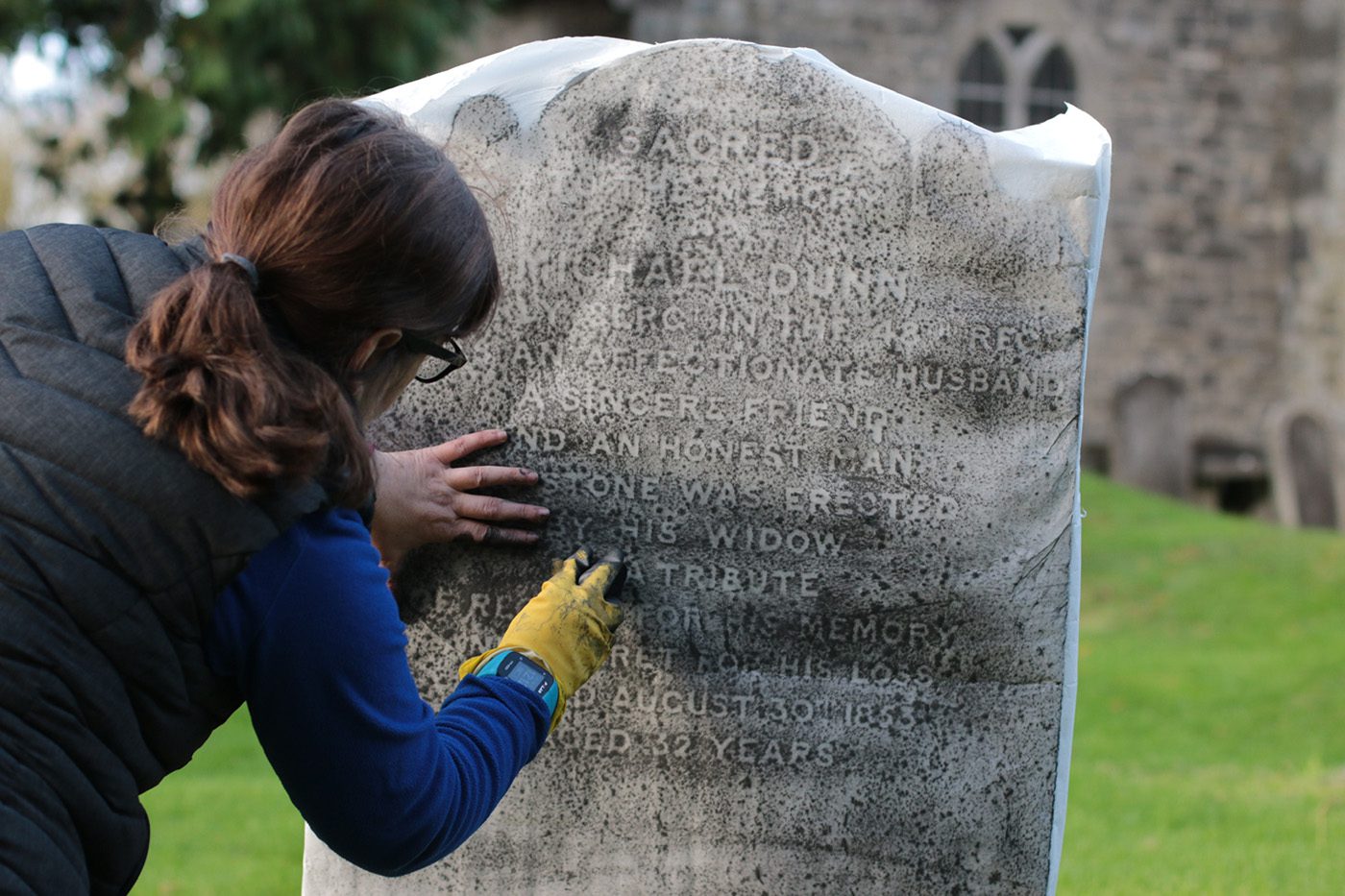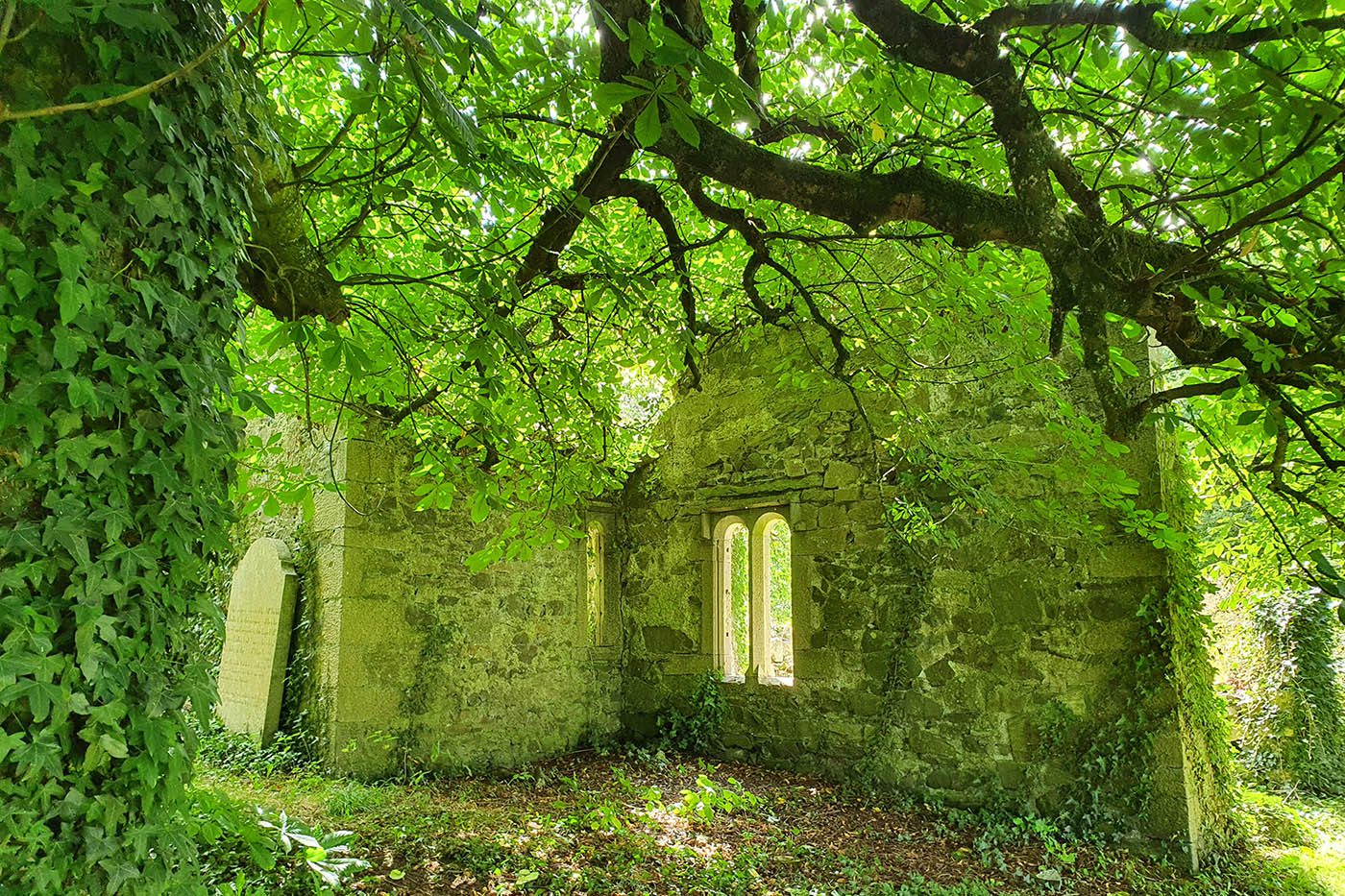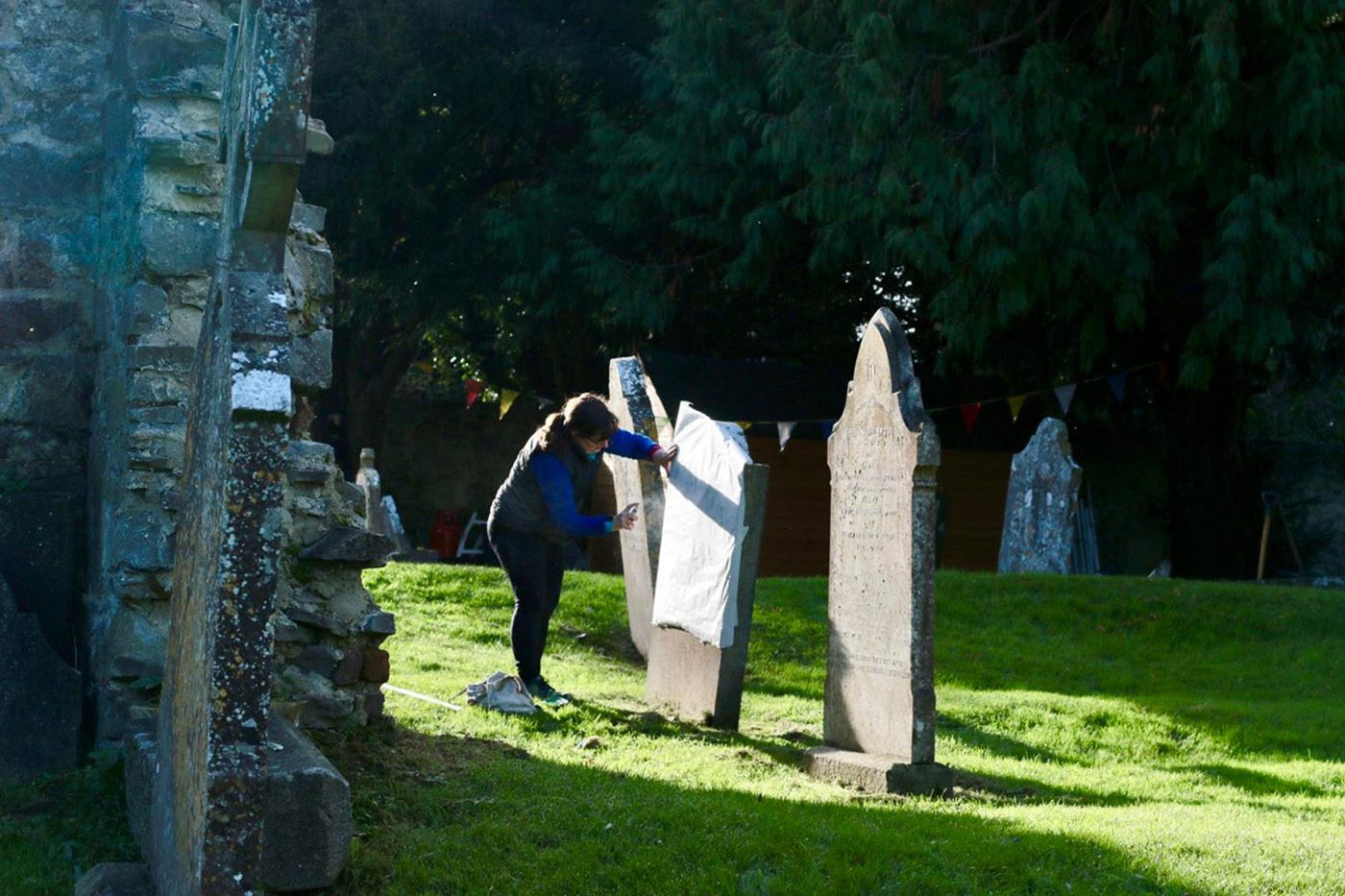Tracing the stories in graveyards in County Kildare through the art of gravestone rubbing became the focus for a fascinating heritage art project inspired during lockdown.
During the first COVID-19 lockdown in 2020, I started to visit Kildare graveyards within the limits we were allowed to travel – first 2km, then 5km, and then the whole of the county. My curiosity about the stories that the graveyards had to tell through their monuments and inscriptions quickly grew.
As a result, I spent the quiet months of the restrictions researching gravestone rubbing, finding out how to do it responsibly; making my own inks, pastes, and waxes; and sourcing the best papers to develop a Gravestone Rubbing Experience. That experience went on to become a wonderful socially distanced way for people to gather creatively after the lockdowns eased.


Finding stories in Kildare’s graveyards
Graveyards are types of outdoor museums that are deeply connected with our sense of place and family history, and they can tell us so much about the social history of an area. As a heritage artist, one of my goals is to make the public more aware of past characters and artistic traditions in their areas and to generate interest in family history, and so raising awareness of local graveyards gave me a way to interest people in those ideas.
The stories that were starting to emerge from Kildare’s graveyards became the inspiration for a project that was kindly funded by Creative Ireland in partnership with the Kildare Libraries Network. They engaged me, as an experienced heritage artist, to use gravestone rubbing to:
- explore the burial grounds of Co Kildare, and reveal stories from our past which connect with our sense of place, heritage and language.
- make the public more aware of the hidden symbolism, heritage, and stories to be found in the graveyards of Kildare.
Over 6 months in 2021, I explored many of the burial grounds of Co Kildare and researched the stories associated with them. I decided to focus on the graveyards at Kilkea Castle and Tea Lane as they had such rich and compelling stories to tell!


Monuments and Mermaids in Kilkea Castle Graveyard
Working with Kilkea Castle, Co Kildare, I had already developed a site-specific gravestone rubbing experience based on the history of the estate, which is now home to a luxury hotel. Its fascinating story is centred on the Fitzgerald family history and the family cemetery on the castle grounds.
Through the Tracing the Past project, I was able to produce a YouTube video that introduced people to the graveyard’s beautiful features, which included stone remnants with beautiful markings and carvings, symbols of the flower of life, and even a mermaid in Kilkea Castle Chapel. All of these features were used as beautiful and unusual ways of describing our dead.
In my short film, I present the old medieval church and graveyard of Kilkea Castle in Co Kildare, and explain the site’s associations with the Fitzgeralds of Kildare. I also show how the old medieval ruin and graveyard still contain symbols, carved in stone, that reflect the might of what was Ireland’s most powerful family.
The Story of Irish Paper-making
Through the process of gravestone rubbing, I had expected to learn more about the unique character of each locality and the lives of the people who were buried there, but I hadn’t expected to learn more about creative industries in Kildare’s past! So, I was delighted to discover the grave of a papermaker who lived in Celbridge from 1749.
The story of Robert Randall was fascinating to me, as a Kildare artist who is interested in the materials as well as the art produced throughout the county’s history. When I researched his life further, I was able to learn lots about Ireland’s almost forgotten 18th-century papermaking trade. His story is told in my short film about Tea Lane graveyard, which explains the stories and past lives of some of the graves I traced.
This project led to lots of other small discoveries. For example, I found a lovely handwritten letter in Dúchas (the Irish Folklore Collection) which had been by my neighbour and cousin Annie Moody about the legend of St Evin’s Bell in The Yew Tree Graveyard. Her family had no knowledge of her entry in the collection, so you can you imagine their reaction on getting to hear a story in her own words!
Gravestone rubbing is a practice that needs to be undertaken with permission and with great care for the monuments and gravestones that are being traced. When it is done with due care, it can help to reveal traces of the past that give us intriguing insights into our community’s past and the individual stories of the people who lived here before us.
Funders: Creative Ireland, in partnership with Kildare Libraries Network.
Partners: Kilkea Castle, Tea Lane Cemetery. Huge thanks to Breda Constantin of Celbridge Guides, who introduced us to Tea Lane’s origins and more famous residents! The local history section of Monasterevin library provided valuable information I used in my Culture Night video, and the Kildare Archaeology Society also provided links to their online journals, available via Kildare Library, that supported my research into Kilkea Castle.
Outputs: You can view the short films I produced above. The project also led to the development of Gravestone Rubbing workshops, and a series of workshops that took place in connection with Kildare Culture Night.
To disseminate the project findings further, the gravestone rubbings from Tea Lane Graveyard were exhibited in Celbridge library in Febrary 2022.


